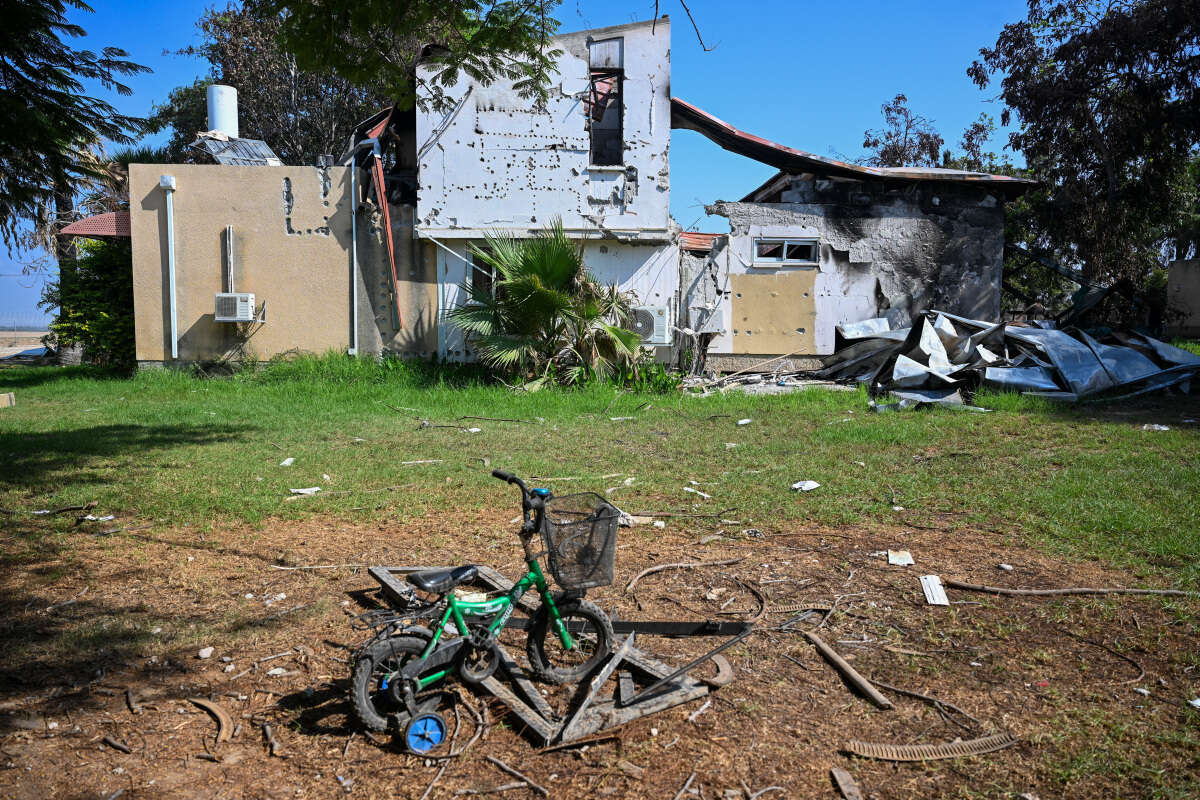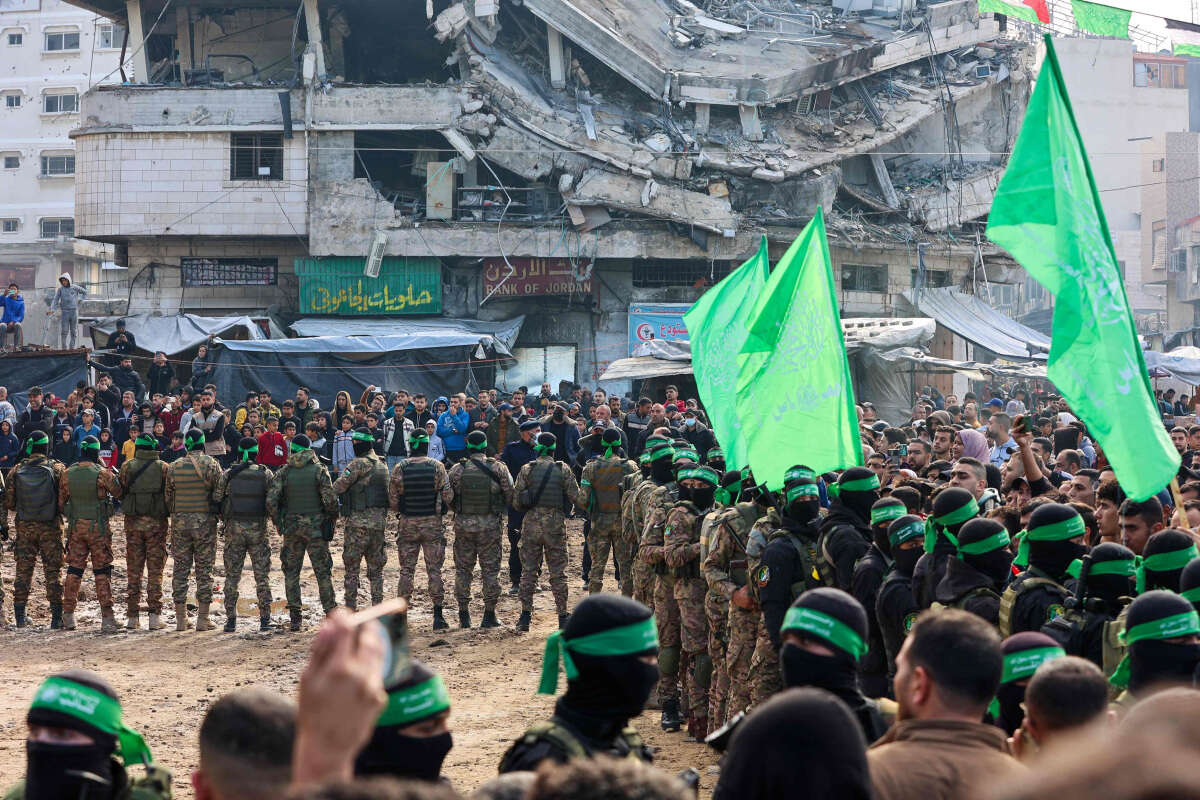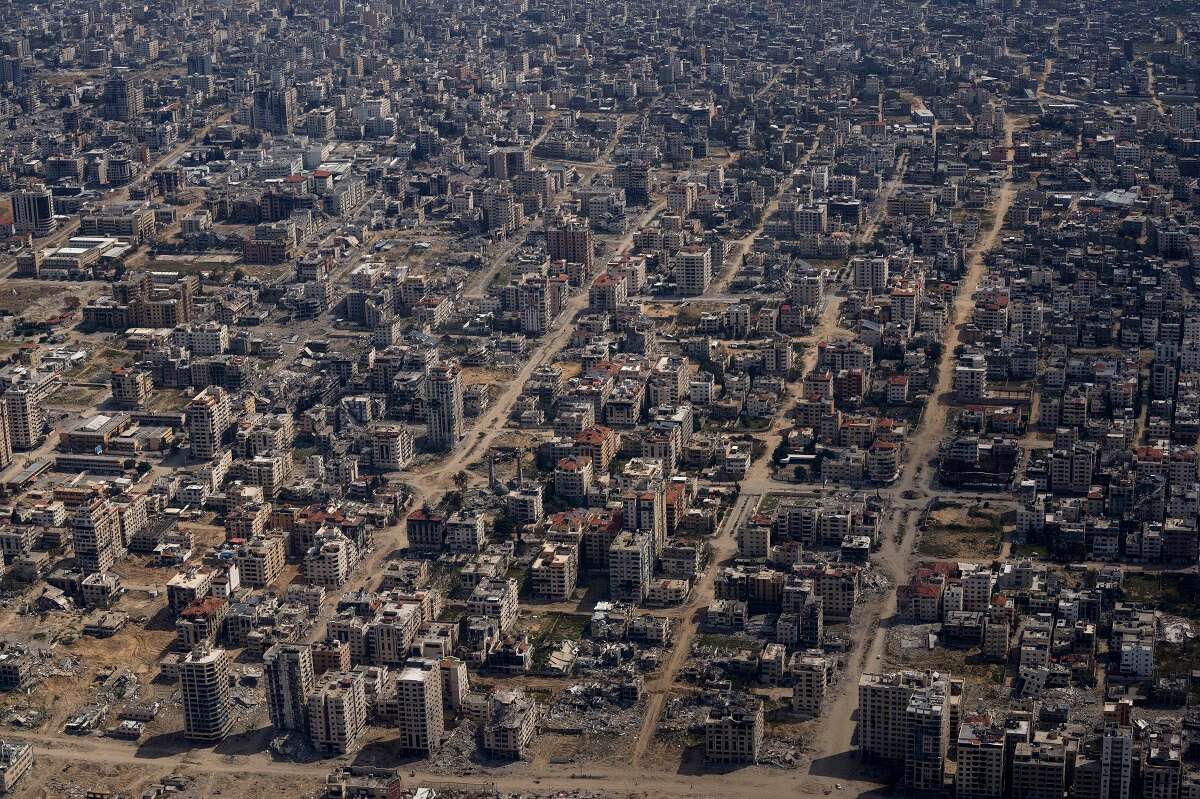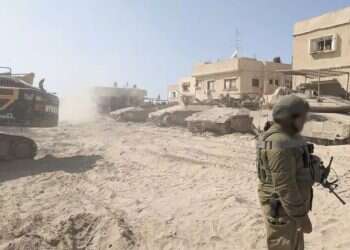It started as another routine shift in "The Pit" – that polished, screen-filled underground chamber nestled deep beneath the Kirya military base in Tel Aviv. The female career officer from the Air Force Intelligence Wing who sat before one of those screens was likely quite bored. Until suddenly, an alert flashed across her monitor: something unusual was happening in Hamas's aerial array. The large clock mounted on the wall showed it was the early hours of the morning. The date was October 7, 2023.
For several years, the Air Force Intelligence Wing had been closely monitoring Hamas's aerial capabilities. While the organization didn't maintain a sophisticated air force, before October 7 they possessed several dozen small unmanned aerial vehicles, some smuggled into Gaza after being manufactured in Iran. These drones were primarily used for surveillance, including gathering intelligence ahead of the invasion into Israel. But at the time, Hamas also possessed suicide drones capable of attacking ground targets.
The career officer followed protocol, passing along information about the unusual activity in Hamas's aerial array. The intelligence reached the Air Force's central control room commander, also located in The Pit, and the IDF's Intelligence Directorate. But due to limitations in interpreting the signals detected by the Intelligence Wing, the unusual activity in Gaza wasn't recognized as a prelude to war. "They knew something unusual was happening, but didn't know what," says a source familiar with the details.
According to the source, based on the preliminary information available to the Israeli Air Force at the time, it was not possible to reach a definitive conclusion that Hamas was preparing for a major attack in the near term. Only in retrospect was it understood that the irregular activity was connected to the attack on Israel.

Why were no questions asked?
The information about the irregularities in Gaza was indeed transferred from the Israeli Air Force to Military Intelligence (AMAN), but the flow of information that night was largely one-directional: the IDF Intelligence Directorate did not in turn update the Air Force about the suspicious signals they had also detected during those fateful hours – the activation of SIM cards by Hamas's Nukhba forces.
The SIM card activation wasn't the only information withheld from the Air Force. From the Air Force investigation of October 7, substantial portions of which are being published here for the first time, it emerges that throughout that fateful night, no one in the military updated the Air Force about the detailed events unfolding in Gaza. While Military Intelligence, the Shin Bet, and Southern Command tried to decipher the meaning of the SIM card activations, and even as IDF Chief of Staff Lieutenant General Herzi Halevi held an extraordinary situation assessment at 4 a.m. with the Southern Command commander and the head of the Operations Directorate – in the Air Force's underground command center, the drowsy routine continued.
Even the Israeli Air Force commander wasn't brought into the loop during the night of October 7 and wasn't summoned to any of the discussions held on the matter. Nevertheless, after the Chief of Staff's early morning situation assessment, the Air Force command center did receive directives from the IDF Operations Directorate.
According to these directives, which arrived around 4:45 a.m., the Air Force was instructed to reinforce the Gaza sector with one additional drone and to transfer two Apache attack helicopters from their alert status at the Ramat David base in the north to the southern sector. The attack drone was directed to deploy immediately, but the helicopters were requested to arrive in the south only at 8 AM.
Perhaps because of this, the Air Force didn't press for answers or try to understand the reason for the heightened alert in Gaza. This despite the fact that they were aware, as mentioned, of the unusual activity in Hamas's aerial array that night. "Raising alert levels on orders from the Operations Directorate is something that happens routinely, and you don't always bother to ask why the alert was shortened or why an additional drone is needed," explains a source who spent considerable time in the Air Force command center. "On October 7 too, they didn't ask why."
The unusual aerial activity, the SIM cards, the chief of staff's conversation, the shortened helicopter alert, the drone deployment – the sad truth is that no one in the Air Force, the IDF, or the intelligence community connected all these dots together. In less than two hours, the gates of hell would open. The drowsy shift in The Pit would transform into a runaway Hollywood blockbuster, a slow-motion catastrophe with an especially tragic ending.
As for those Hamas suicide drones? They took part in the attack that day, aiming to destroy Israel's defensive array along the border fence. According to a source familiar with the details, they did not cause significant damage.
While the Air Force investigation of October 7 does praise the actions of that female Intelligence Wing officer, it barely dwells on the night of October 7, on intelligence that was or wasn't received during those hours, and on the Air Force's tendency not to press for answers when receiving orders from the Operations Directorate. The vast majority of the investigation deals with events in the Air Force command center only from 6:30 a.m. on October 7 until midnight that day. The first day of fighting in a war that has now lasted a year and a half.
Current and former IDF officers express sharp criticism of the decision to barely investigate the night of October 7 in the Air Force, as well as the conclusions of the battle day investigation itself, which has already been presented in broad forums. We'll get to that criticism, and other claims directed at the institution of IDF investigations in general.
But first, it's worth examining the October 7 investigation itself, which details how the Air Force responded to Hamas's cruel – and it must be admitted, brilliant – surprise attack.
As befitting the Air Force, the investigation, which has yet to be finalized by Chief of Staff Herzi Halevi and is still considered a draft, is loaded with data, graphs and videos. It tells a complex story of a war machine that was completely surprised but after just a few hours of recovery, operated to the best of its ability with all tools at its disposal. This story contradicts a long series of testimonies and media reports claiming the Air Force barely functioned during the fighting on October 7. "It's true that there were people who looked to the skies that day and didn't always see an aircraft or helicopter," says an Air Force source in response. "But that doesn't mean we weren't in other places."
Indeed, data revealed here for the first time shows that during the fighting on October 7, the Air Force fired 11,000 shells, dropped more than 500 heavy one-ton bombs and launched 180 missiles. According to the data, during the battle the Air Force eliminated 1,000 fighters. Even if this is an exaggeration, these are impressive numbers.
"That terrible morning we failed to defend Israel's citizens," says an Air Force source. "But it should be said that from 6:29 a.m. we did everything we could. We pounced, took off with everything possible, pursued contact, linked up with forces on the ground, flew thousands of fighters, evacuated hundreds of wounded and from 7:15 that morning, we have not stopped attacking ever since."
The investigation further reveals that besides the attack formations, the Air Force's special units – Shaldag and Unit 669 – took a significant part in combat operations, and that Air Force transport helicopters landed about 1,700 infantry fighters in the Gaza sector during the fighting and evacuated more than 150 casualties. During one mission a Yasur helicopter was hit and destroyed by an RPG after making an emergency landing. The air defense array also dealt, with relative success, with the heaviest barrage ever fired at Israel. In other words, the skies were not completely empty.
True. The most well-funded and powerful branch of the IDF, the fear of the entire Middle East, was exposed in its nakedness that day. The Air Force investigation authors made sure to emphasize right from the start the fact that the Air Force failed completely in its mission to defend Israel's citizens and borders. Nevertheless, it appears that from the moment the Air Force engaged at 6:30 a.m., it did operate well and with initiative, resourcefulness and pursuit of contact.

The Air Force investigation materials, based on an enormous database that reached Israel Hayom exclusively, fully map out the battle the Air Force fought on October 7, and provide the best answer so far to the tormenting question: where was the Air Force?
The Air Force investigation of October 7 was conducted by 20 senior Air Force officers with the ranks of brigadier general and colonel. These were reservists with rich experience in the Air Force, but ones who didn't take an active part in the decision-making chain on October 7.
They based their work on an enormous database including detailed documentation of every sortie conducted in the Gaza sector on October 7. This database was overlaid on an interactive map showing with a mouse click every attack carried out by the Air Force, including precise time and location, type of munition fired, the aircraft that fired it, the relevant squadron and the result of the hit (destruction of a vehicle, elimination of a fighter, etc.).
The map, which can be viewed on a timeline, shows how in the first three hours the Air Force still operated hesitantly and far from understanding the situation on the ground. For example at 8:18 a.m., there were only six fighter jets over Gaza (some were equipped with air-to-air missiles and therefore weren't effective at stopping the attack), five attack helicopters and three drones.
According to the investigation, Air Force Commander Major General Tomer Bar arrived at The Pit at 7:03 a.m. and declared a state of war at 7:10 a.m. The Air Force's number two, Chief of Staff Brigadier General Omer Tishler, arrived at the control center at 7:44 a.m. While Tishler, who by virtue of his role is responsible for force employment, took command of the control center, Bar was engaged in situation assessments with the Chief of Staff.
In the first two hours, the control center was still convinced they were dealing with only a limited number of infiltrations. Only at 9:30 a.m., as the battle picture became clearer, did Bar instruct pilots in the field to attack along the entire border area without requesting permission. At 10:30 a.m. the control center understood that the main problem they were dealing with was waves of fighters continuing to infiltrate en masse through the fence. In a recording from that time you can hear the following order on the radio: "Whoever doesn't have a mission, go to the perimeter and ensure there's no entry into our territory."
The data shows that from this moment, the number of attacks carried out by Air Force pilots rose dramatically. "In the control center they said 'enough, attack everything in the border area, without identification,'" says someone present there that day.
In this context it's important to explain the identification protocol. The ability of fighter pilots and drone operators to identify from the air whether those on the ground are fighters, civilians or hostages is very limited. For this they usually rely on guidance from ground forces.
In certain cases the pilots did communicate with ground forces and even civilians, sometimes via their personal mobile phones, and received attack guidance from them. But as can be seen from the abundance of videos shown in the investigation, in many cases there was no one to guide the pilots, and they remained confused and deliberated at length whether to attack or not. "There could be hostages there too," says one of the pilots hovering over a large group of armed men, in a video appearing in the investigation.
Despite this inherent difficulty, one of the conclusions emerging from the Air Force investigation is that for too long, the pilots in the field continued to stick to orders and the approval chain customary in the Air Force, and didn't understand on their own that they needed to transition to a much more permissive fire policy. When presenting the investigation to various Air Force forums, the term "excessive obedience" was even used to describe the pilots' conduct in the first hours.
"What can you do, the Air Force is a force of squares?" says a former senior officer. "Until approval passes through the entire chain of command according to procedures, they don't fire. It's part of the organizational culture." Another officer in the force who was exposed to investigation details says that "99 percent of the time the Air Force's square conduct is a good thing. But in moments of chaos you also need to know how to think outside the box and work against procedures. On October 7 that almost never happened."
"Prepare for Event X"
Of all the Air Force's branches, the saddest story is that of the fighter jets. The force's most prestigious branch was actually the least effective that day. Israel's enormous advantage over its enemies turned into a huge disadvantage on October 7.
Fighter pilots need guidance, as mentioned, to attack pop-up targets on the ground due to their high speed and altitude. Throughout the day fighter jets attacked groups and vehicles moving along the border fence, but it's hard to say these attacks were particularly helpful, and in any case they weren't numerous, since most attacks along the fence focused on a completely irrelevant matter.
Here a brief explanation is needed: The Air Force had prepared contingency orders in advance for a case of a Hamas raid into Israel, or what was defined in the IDF as "Philistine Horseman." The working assumption was that such a raid would be done underground, through "approach tunnels" with exit openings near the border fence. The contingency orders for attacking the approach tunnels were activated already at 7:50 a.m., and throughout the day fighter jets attacked many of the coordinates appearing in them. But because Hamas's raid was done above ground and not through tunnels, those tunnels were empty. The munitions dropped on them by fighter jets exploded with a big noise, but without hitting almost anyone.
At 10:30 a.m., the "Sword of Damocles" contingency order was also activated, under which the fighter jet array attacked Hamas command posts and weapons depots deep in Gaza. Even if these attacks were effective, it's understood they weren't relevant to stopping the ground raid. Either way, during the day fighter jets dropped 530 tons of bombs on Gaza, an enormous amount of explosives.
The Air Force investigation conclusions state that "the root cause of failure" on October 7 is an "effectiveness gap" that stemmed from "war by surprise, without prior preparation, gap versus the reference scenario, and slow understanding of the battle picture relative to enemy moves." In other words, the investigation conclusions are that the Air Force wasn't ready for Hamas's surprise attack, but from the moment it engaged it operated adequately. Not everyone exposed to the investigation agrees with this determination, or with the investigation conclusions in general. "This isn't a good investigation," says an Air Force reserve officer who participated in the war. "Its subtext is that even if the force didn't work optimally and quickly enough, in the end it received definitions from the larger army and met them. Meaning they told it to prepare for event X, and for that it prepared well and that it executed.
"When all hell broke loose, the force didn't know how to function, but that was barely criticized in the investigation. Additionally, all the investigation team members just left the system a moment ago. These are people whose thought patterns are identical to the conception, and who know very well all the officers they're investigating. What sharp or groundbreaking conclusions can they already reach?"
These claims are heard, and even more strongly, from several officers in the ground forces who were exposed to the "Green Army" investigations. According to one of them, in these investigations, which in recent weeks have matured toward presentation to the Chief of Staff, there is an attempt "to establish a narrative that October 7 was a puncture, and that since then everything is fine and we're winning."

An Air Force source claims on the other hand that "the investigation team members were completely independent and had full mandate to investigate, examine, access systems and present conclusions and lessons."




